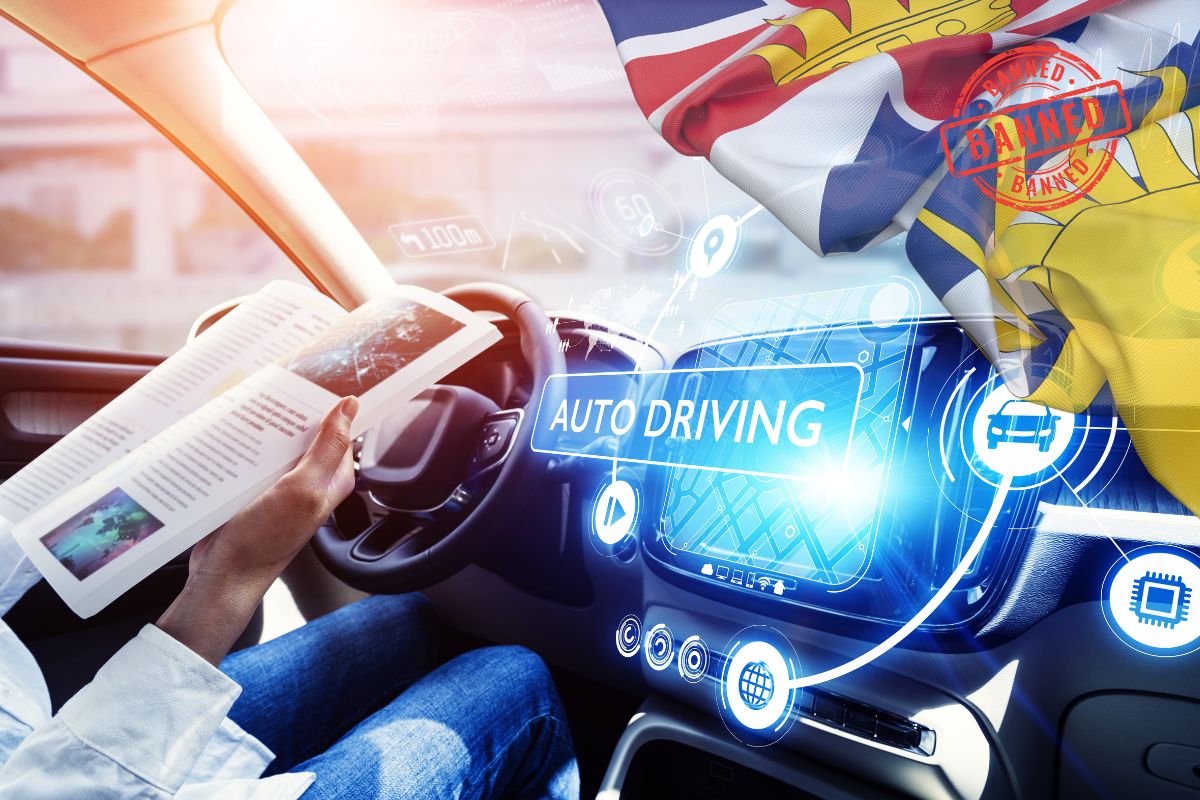While the United States gears up for a driverless future, with expectations set to see fully automated cars by 2025 and beyond, British Columbia takes a surprising detour. The province has instituted a new regulation, effectively banning the use of autonomous vehicles on its roads, raising eyebrows and prompting discussions over safety concerns and the future of the insurance industry.
Autonomous Cars – A Green Light in the US, A Red One in BC
The cutting-edge narrative of autonomous vehicles—heralded by the U.S. National Highway Traffic Safety Administration (NHTSA) as the gateway to a collision-free future—faces a regulatory speed bump in Canada. British Columbia’s recent Order in Council 147/2024 outlaws Level 3, 4, and 5 autonomous vehicles from public thoroughfares, penalizing unauthorized use with hefty fines and even imprisonment.
Penalties for contravening the new regulation start with a fine of $320, along with 3 driver penalty points for initial infractions. However, for more serious or repeated violations, fines can escalate to a maximum of $2,000, coupled with the possibility of 6 months in prison.

Currently, the autonomous vehicle market comprises a very limited selection of Level 3 systems available to the public. Notably, Mercedes-Benz has introduced its Drive Pilot system, which has gained regulatory approval exclusively in California and Nevada. The Drive Pilot system is designed to operate specifically in heavy traffic conditions and is limited to speeds of up to 40mph (65km/h). On the other hand, BMW is poised to launch its own Level 3 driving automation system, the Personal Pilot L3, targeted for release within the year. This system will be an exclusive feature of the 7-Series models and will initially be available only in Germany. Mirroring Mercedes-Benz’s operational constraints, the BMW system will also be restricted to a top speed of 37mph (60km/h), and will only be functional on separated highways, indicating a cautious yet evolving approach to autonomous driving technology on a global scale.
With the only public Level 3 system originating from Mercedes-Benz and confined to Californian and Nevadan traffic, the Canadian province’s clampdown skews towards skepticism. Does this signal heightened vigilance over tech-imbued automobiles, or is it rather a prescient measure protecting “vulnerable road users,” as the BC government posits?
The Insurance Equation
The US Insurance Information Institute offers a clue to the puzzling future of autonomy on the roads. With advanced automated features becoming a staple in the modern vehicle’s anatomy, the expectation is that human error—responsible for most road mishaps—will diminish significantly.
Yet such projections do not straightforwardly resolve the maze of insurance implications. The blueprint for driver-less futures proposes a decline in accident rates. Still, the industry wrestles with brewing uncertainties — will autonomous car mishaps spark a rise in product liability claims against manufacturers? How will liability laws morph in response, and more pressingly, will insurance premiums throttle up or down?
Bridging the Gap to Self Driving Cars
The run-up to a world where cars command the wheel entirely is punctuated by anticipation and trepidation alike. Experts duel in forecasts: some envision complete transition by 2030, others anticipate a more gradual shift, projecting the omnipresence of crash avoidance systems by 2049.
The Insurance Institute for Highway Safety injects a dose of realism to the conversation, disambiguating that the 3.5 million self-driving vehicles anticipated to populate U.S. roads by 2025 won’t possess complete autonomy but will operate under specific conditions.
Cybersecurity in cars at the Crossroads
A stark reality shadows the road to automation—the specter of cyber threats. These vehicles, by design, depend on intricate networks of software and hardware that interact seamlessly to perform the myriad tasks formerly undertaken by human drivers. Furthermore, their connectivity to the internet amplifies their vulnerability, subjecting them to a spectrum of cyber threats. Prominent among these concerns is the possibility of remote hacking, where malefactors exploit software vulnerabilities to usurp control over a vehicle’s functions. This vulnerability not only poses a significant risk to the safety and privacy of individuals but also underlines the critical need for robust cybersecurity measures in the evolving landscape of autonomous transportation.
Are self-driving cars the paragon of roadway safety the US envisions? Or does British Columbia’s resistance signal cautionary bumps yet to be charted? The question of whether insurance premiums will track the rise or fall in perceived risks is as open-ended as the roads upon which these autonomous machines will travel.
As policies accelerate to keep pace with technological strides, the automotive narrative is anything but static. What remains to be seen is how swiftly and safely we’ll transition into this new epoch of transportation, where every lane shift and stop sign is yet another variable in the algorithm of progress.
For a future so closely entwined with technology, on roads less traveled by, the autonomous vehicle encounters both green lights and regulatory stop signs. The destination? Yet uncertain. But the ride promises to redefine our concepts of safety, liability, and transport economics. Buckle up; it’s a future in motion.
—
Have thoughts or experiences with autonomous vehicles? Share your perspective on their safety and how you think they’ll affect your insurance premiums. Join the discussion on our social platforms.

